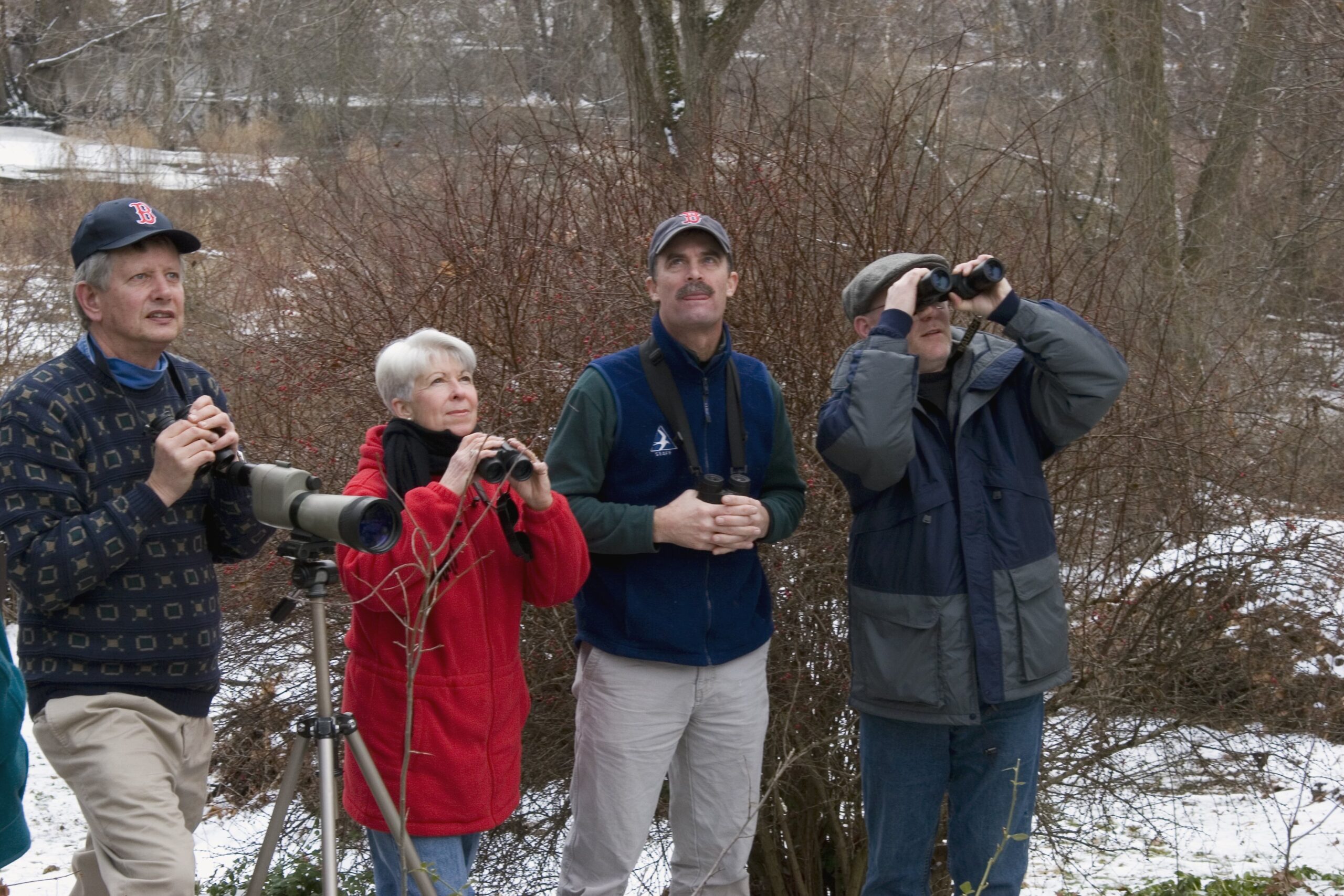 I receive lots of press releases and most of them go into the garbage. This one caught my eye — it’s sounds like a very cool thing to do, a good way to help shape conservation and steer Congress in a good way.
I receive lots of press releases and most of them go into the garbage. This one caught my eye — it’s sounds like a very cool thing to do, a good way to help shape conservation and steer Congress in a good way.
70,000 Hawk-Eyed Volunteers Gearing Up for 114th Annual Audubon Christmas Bird Count
NEW YORK (Oct. 30, 2013)- The longest-running citizen science survey in the world, the Audubon Christmas Bird Count (CBC) will take place from December 14, 2013 to January 5, 2014. Tens of thousands of volunteers throughout North America will brave winter weather to add a new layer to data that has shaped conservation and Congressional decisions for over a century.
Each year, the Audubon Christmas Bird Count mobilizes over 70,000 volunteer bird counters in more than 2,300 locations across the Western Hemisphere, from above the Arctic Circle to Brooklyn and Los Angeles to Tierra del Fuego. The Audubon Christmas Bird Count utilizes the power of volunteers to track the health of bird populations at a scale that professional scientists could never accomplish alone. Every local count is part of this vast volunteer network and continues a tradition that stretches back more than 100 years.
“Audubon was a social network before the world ever heard the term,” said Audubon President and CEO David Yarnold (@david_yarnold). “Each December the buzz from our social network goes up a few decibels, as people with the knowledge and the passion for birds provide what no organization alone can. The Audubon Christmas Bird Count harnesses volunteer power to gather knowledge that shapes conservation policy at enormous scales in this country. I couldn’t be prouder of the volunteers who contribute each year.”
The Audubon Christmas Bird Count revealed the dramatic impact climate change is already having on birds and a disturbing decline in common birds, including the Northern Bobwhite quail. The many decades of data not only helps identify birds in need of conservation action, it also reveals success stories. The CBC helped document the comeback of the Bald Eagle and significant increases in waterfowl populations, both the result of conservation efforts.
Last year’s count shattered records. A total of 2,369 counts and 71,531 people tallied over 60 million birds of 2,296 different species. Counts took place in all 50 states, all Canadian provinces, and over 100 count circles in Latin America, the Caribbean, and the Pacific Islands. Three new counts were even welcomed in Cuba, where for the first time ever the tiniest bird in the world, the Bee Hummingbird, was included in CBC results.
Several interesting avian incursions were recorded during last year’s CBC, including those of Northern Shrikes, Snowy Owls and winter finches. The most significant event was an unprecedented movement of Razorbills (a puffin relative) in huge numbers far south of their normal range off the East Coast of North America. Warming sea temperatures in the North Atlantic, which depressed their usual food supply, resulted in tremendous numbers of hungry Razorbills almost 1,000 miles farther south than normal. Prior to 2012, there were few records of Razorbill in Florida and parts of the upper Gulf of Mexico. It is unknown how many of these birds were able to return northward to their breeding grounds for the summer of 2013; many washed up dead along the coast. Audubon Christmas Bird Count data are an integral part to the understanding of how these and other birds are faring in the non-breeding season.
“This is not just about counting birds,” says Gary Langham, Audubon’s chief scientist. “Data from the Audubon Christmas Bird Count are at the heart of hundreds peer-reviewed scientific studies and inform decisions by the U.S. Fish and Wildlife Service, the Department of the Interior, and the EPA. Because birds are early indicators of environmental threats to habitats we share, this is a vital survey of North America and, increasingly, the Western Hemisphere.”
The Audubon Christmas Bird Count began in 1900 when Dr. Frank Chapman, founder of Bird-Lore – which evolved into Audubon magazine – suggested an alternative to the holiday “side hunt,” in which teams competed to see who could shoot the most birds. While the ultimate goal of participating in a count is tallying a representative sample of the birds on a count day, the natural competitive spirit of birders is what drives them to do the most thorough job possible. CBC has become a treasured holiday tradition, a reunion with birding friends and a way for anyone to play a small part in a big conservation picture. The growing combined pool of contributed sightings helps researchers understand how birds are faring in a way that Chapman could never have conceived back in 1900.
The Audubon Christmas Bird Count is a citizen science project organized by the National Audubon Society. There is no fee to participate and the quarterly report, American Birds, will be available online. Audubon Christmas Bird Count information is also available online in Spanish. For more information and to find a count near you visit, http://birds.audubon.org/get-involved-christmas-bird-count.
Now in its second century, Audubon connects people with birds, nature and the environment that supports us all. Our national network of community-based nature centers, chapters, scientific, education, and advocacy programs engages millions of people from all walks of life in conservation action to protect and restore the natural world. Visit Audubon online at www.audubon.org and follow @audubonsociety.
